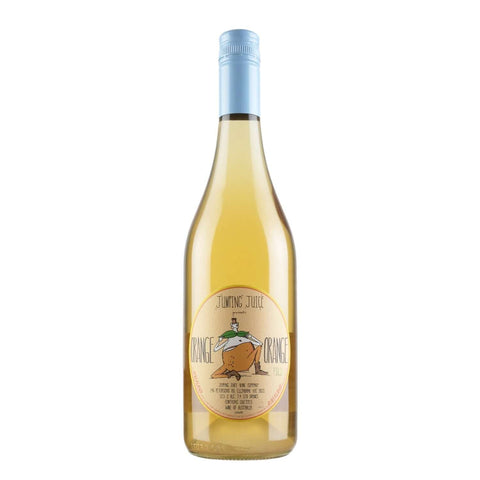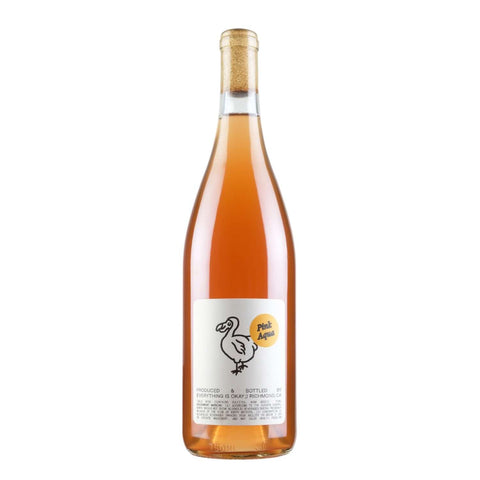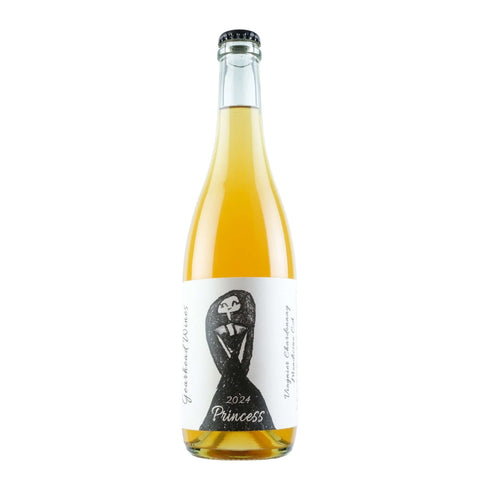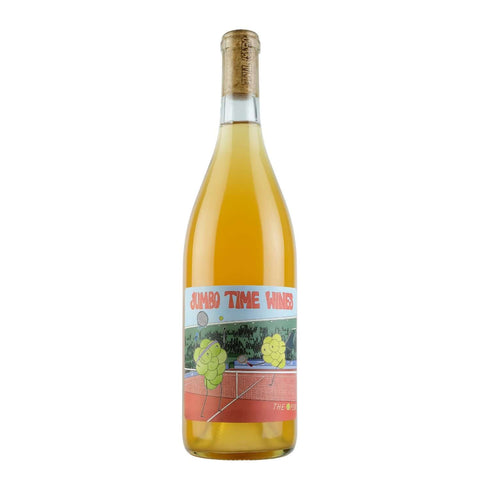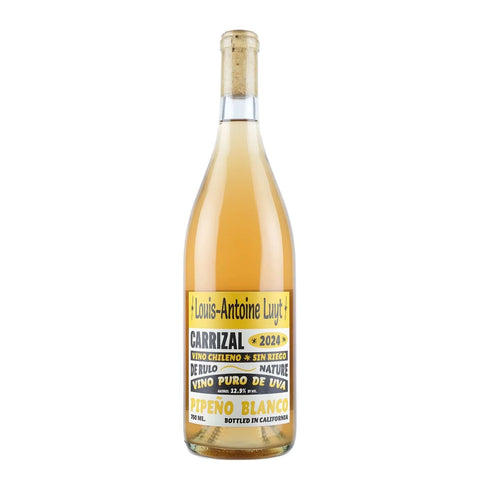Orange Wine
Discover our curated selection of orange wine and skin contact wines from renowned natural wine makers worldwide. These amber wines are crafted by fermenting white grapes with extended skin contact, creating distinctive golden hues and complex tannin structure. Expect flavors of dried apricot, honey, wildflower, and toasted nuts with fuller body than traditional white wine. Perfect for pairing with Mediterranean cuisine, Asian dishes, and aged cheeses. Browse bottles from Italy, France, Georgia, and California showcasing this ancient 8,000-year-old winemaking tradition.
What is Orange Wine? How is Orange Wine Made? A 101 Deep Dive
Orange wine represents one of the oldest winemaking methods in the world, yet many wine drinkers have only recently discovered this ancient style. Made by fermenting white grapes with their skins, orange wine delivers a distinctive amber color, complex flavors, and substantial texture that sets it apart from conventional white wines. This comprehensive guide explores what orange wine is, how it's made, and why this skin-contact wine style has captivated natural wine enthusiasts worldwide.
What Is Orange Wine?
Orange wine is white wine made using red winemaking techniques. Despite its name, orange wine contains no oranges—the term describes the wine's amber to deep copper color, which develops when white grape juice ferments in prolonged contact with grape skins and seeds. This process, called maceration, extracts tannins, phenolic compounds, and pigments from the skins, transforming the wine's color, texture, and flavor profile.
The wine industry also uses terms like skin-contact white wine, amber wine, or macerated white wine to describe this category. Regardless of terminology, the defining characteristic remains the same: white grapes vinified like red wines through extended skin contact during fermentation.
Ancient Origins: 8,000 Years of Winemaking History
Orange wine's roots extend deep into human history, particularly in Georgia, where archaeological evidence confirms winemaking dates back over 8,000 years. Georgian winemakers developed the qvevri method, fermenting and aging wine in large egg-shaped clay vessels buried underground. These earthenware amphorae, some holding thousands of liters, maintain consistent cool temperatures naturally without modern refrigeration.
The traditional Georgian approach involves crushing whole grape clusters—stems, skins, seeds, and juice—into qvevri. The vessels are sealed with stone lids and clay, then left undisturbed for months. This extended maceration period, often spanning six months or longer, produces wines with remarkable depth, structure, and longevity. UNESCO recognized Georgian qvevri winemaking as Intangible Cultural Heritage of Humanity in 2013, acknowledging its historical and cultural significance.
Beyond Georgia, evidence suggests ancient winemaking civilizations throughout the Caucasus region, Mediterranean, and Fertile Crescent employed similar techniques. Before modern winemaking equipment enabled juice separation, most wines underwent some degree of skin contact. The distinction between "white" and "red" wine production is relatively modern.
How Orange Wine Is Made: The Production Process
Orange wine production begins with white grape varieties—common choices include Rkatsiteli and Mtsvane in Georgia, Ribolla Gialla and Friulano in Italy's Friuli region, Pinot Grigio, and Gewürztraminer. The winemaker's approach to maceration determines the final wine's characteristics.
Maceration Duration
Skin contact duration varies dramatically based on desired style. Short maceration (3-7 days) produces lighter amber wines with moderate tannins and gentle texture. Medium maceration (1-3 months) creates more structured wines with pronounced tannins and deeper color. Extended maceration (6-12 months) yields the most intense expressions with significant tannic grip, complex aromatics, and deep orange-copper hues.
Fermentation Methods
Most orange wine producers embrace natural winemaking philosophies, using spontaneous fermentation with indigenous yeasts rather than commercial yeast strains. Wild fermentation adds complexity and regional character but requires careful monitoring to prevent spoilage. Some producers use ambient fermentation temperatures, while others employ gentle temperature control.
Aging Vessels
The choice of aging vessel significantly impacts the wine's final profile. Traditional qvevri impart subtle earthy minerality and allow micro-oxygenation through the clay's porous structure. Stainless steel tanks preserve fresh fruit character and bright acidity. Neutral oak barrels or large format foudres add textural complexity without obvious wood flavors. Concrete eggs, increasingly popular among natural winemakers, offer shape-driven lees contact and gentle oxygen exchange.
Minimal Intervention Philosophy
Orange wine production typically aligns with natural and minimal-intervention winemaking. Producers often avoid fining, filtration, and sulfur additions, or use only minimal sulfites at bottling. This hands-off approach allows the wine to express terroir and vintage characteristics authentically but requires pristine fruit and meticulous cellar hygiene.
Characteristics and Flavor Profile of Orange Wine
Orange wine occupies a unique sensory space between white and red wines, offering characteristics of both categories.
Color
The color spectrum ranges from pale gold to deep amber, burnt orange, or copper. Color intensity correlates with maceration length, grape variety, and aging duration. Ribolla Gialla produces lighter golden-orange hues, while Rkatsiteli achieves deep amber tones. Some wines develop mahogany edges with extended aging.
Texture and Structure
Orange wine's most distinctive feature is its textural weight. Extended skin contact extracts tannins that provide grip, structure, and a slightly drying sensation similar to red wine. This tannic backbone makes orange wine more substantial than conventional white wine, with fuller body and greater aging potential. The wine coats the palate, leaving a lingering, almost chewy finish.
Aromatic Profile
Expect complex, often savory aromas: dried apricot, quince, jackfruit, bruised apple, honey, beeswax, orange peel, walnut, hazelnut, chamomile, dried flowers, hay, tea leaves, tobacco, and herbs. Some wines show oxidative notes like apple cider, sherry-like nuttiness, or sourdough. Spice elements include ginger, turmeric, saffron, and white pepper.
Flavor Characteristics
Flavor profiles combine fruit, earth, and spice elements. Stone fruit flavors (peach, apricot) appear dried or preserved rather than fresh. Citrus notes lean toward bitter orange pith and marmalade. Herbal and botanical qualities—juniper, sage, thyme—add complexity. Some wines exhibit funky, brett-like characteristics or brett-adjacent flavors that natural wine enthusiasts appreciate but may challenge conventional palates.
Regional Styles and Producers
Georgia
Georgian orange wine represents the style's spiritual home. Producers ferment Rkatsiteli, Mtsvane, Kisi, and Khikhvi in buried qvevri, following methods unchanged for millennia. These wines display remarkable depth, with pronounced tannins, earthy minerality, and oxidative complexity. Georgian orange wine pairs naturally with the region's cuisine—khachapuri (cheese bread), khinkali (dumplings), and grilled meats.
Friuli-Venezia Giulia, Italy
Italy's northeastern Friuli region sparked orange wine's modern renaissance. Producers like Gravner, Radikon, and La Castellada revived ancient techniques in the 1990s, inspiring a global movement. Friulian orange wines use Ribolla Gialla, Friulano, Pinot Grigio, and Malvasia, often aged in Slovenian oak or amphora. These wines balance structure with elegance, showing more refinement than some rustic Georgian examples.
Slovenia
Across the border from Friuli, Slovenian winemakers in the Brda and Vipava regions produce outstanding orange wines. The countries share grape varieties and winemaking philosophies, with many producers employing extended maceration in large oak casks or amphora.
Austria
Austrian natural winemakers have embraced orange wine production, particularly in Burgenland and Styria. Grüner Veltliner, Welschriesling, and Sauvignon Blanc undergo skin contact, producing wines with mineral tension and herbal aromatics alongside textural complexity.
United States
American natural wine producers in California, Oregon, and New York experiment with orange wine styles. West Coast winemakers often use Pinot Grigio, Ribolla Gialla, and Vermentino, while Eastern producers work with hybrid varieties and vinifera grapes adapted to cooler climates.
Food Pairing with Orange Wine
Orange wine's tannic structure, acidity, and complex flavors make it remarkably food-friendly. The tannins cut through rich, fatty dishes, while the acidity balances bold flavors.
Mediterranean and Middle Eastern Cuisine
Orange wine shines with mezze spreads, hummus, baba ganoush, falafel, grilled halloumi, and lamb dishes. The wine's savory character complements tahini, olive oil, and herbs like oregano and za'atar.
Asian Flavors
The wine handles spicy, fermented, and umami-rich dishes that challenge conventional white wines. Try orange wine with Korean kimchi, Japanese miso-based dishes, Thai curries, Vietnamese pho, or Chinese twice-cooked pork. The tannins balance soy sauce and fish sauce, while the body stands up to bold flavors.
Roasted Vegetables and Earthy Dishes
Root vegetables, mushrooms, and lentils pair beautifully with orange wine's earthy, oxidative notes. Consider roasted carrots with cumin, mushroom ragù, lentil stew, or roasted cauliflower.
Cheese
Orange wine complements aged cheeses like Parmigiano-Reggiano, Gruyère, and aged Gouda. The tannins cut through rich, creamy cheeses, while the wine's complexity matches nutty, crystalline aged varieties.
Charcuterie and Cured Meats
Serve orange wine with prosciutto, salami, bresaola, or pâté. The wine's structure handles fatty meats, while its acidity refreshes the palate.
Serving Temperature
Serve orange wine slightly cool, between 55-60°F (13-16°C). This temperature preserves freshness while allowing aromatics and flavors to express fully. Avoid over-chilling, which mutes complexity and emphasizes tannins.
Why Orange Wine Matters
Orange wine represents more than a trend—it connects modern drinkers to ancient winemaking wisdom. The style challenges conventional categories, proving white grapes can produce structured, age-worthy wines without manipulation. For natural wine enthusiasts, orange wine exemplifies minimal-intervention philosophy, expressing terroir, vintage, and winemaker vision without technological interference.
The orange wine movement has inspired producers worldwide to rediscover traditional techniques, revive forgotten grape varieties, and question industrial winemaking practices. Whether you're exploring Georgian qvevri wines or Italian skin-contact Ribolla Gialla, orange wine offers a profound, thought-provoking tasting experience that rewards curiosity and an open mind.
Frequently asked question
Natural wine is generally made from organically or biodynamically farmed grapes, fermented with native (wild) yeasts, and produced with minimal intervention—no additives beyond little or no sulfur, and often unfined and unfiltered. There’s no single legal definition, but transparency, low sulfites, and hands-off winemaking are core principles.
There’s no scientific proof that natural wine is “healthier.” It still contains alcohol. However, many natural wines use organically or biodynamically farmed grapes, fewer additives, and lower sulfites, which some people prefer or tolerate better. Bottom line: choose transparently made bottles you enjoy—and drink in moderation.
It aligns with what drinkers want: transparency, sustainability, and distinctive flavor. Made from organically or biodynamically farmed grapes and fermented with native yeasts, natural wine is low-intervention, often lower in sulfites, and showcases terroir and small producers—delivering character, ethics, and authenticity.
No. Natural wine still contains alcohol—the primary cause of hangovers. Lower sulfites and fewer additives don’t guarantee a headache-free experience. How you feel depends on alcohol content, hydration, quantity consumed, and personal sensitivities (histamines, tannins, sugar). Choose well-made natural wines, pace yourself, eat with your wine, and drink water.
No. Natural wine revives long-standing methods—organic/biodynamic farming, native-yeast fermentation, minimal additives—and meets enduring demand for transparency, sustainability, and terroir-driven flavor. Its growth across regions, retailers, and restaurants signals a lasting category, not a passing fad.
